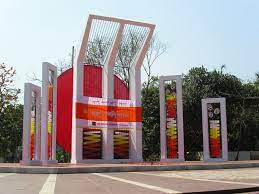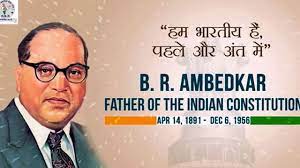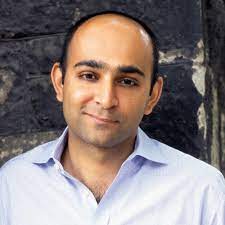by Claire Chambers
 Language has an important role to play in national identity. One only has to think about the Shaheed Minar in Dhaka. As its name suggests, this monument commemorates what many Bangladeshis view as the shaheeds or martyrs of the Bengali language movement who were killed in Bengal in 1952. The history of West Pakistan’s linguistic imperialism contributed significantly to the 1971 War and the creation of Bangladesh out of Pakistan’s former East Wing.
Language has an important role to play in national identity. One only has to think about the Shaheed Minar in Dhaka. As its name suggests, this monument commemorates what many Bangladeshis view as the shaheeds or martyrs of the Bengali language movement who were killed in Bengal in 1952. The history of West Pakistan’s linguistic imperialism contributed significantly to the 1971 War and the creation of Bangladesh out of Pakistan’s former East Wing.
However, in the context of present-day Pakistan and the Indian subcontinent more broadly, the relationship between language and nation is a complex and contested question. The English language continues to exert a tenacious hold over the subcontinent. In the decades immediately before and after Partition, the majority of South Asians, especially leftists, rejected the use of English for creative purposes, positioning it as an elitist, colonial tongue. For instance, article 4 of the Manifesto of the Progressive Writers Association (1936), sets out the radical authors’ goal ‘to strive for the acceptance of a common language (Hindustani) and a common script (Indo-Roman) for India’. Tellingly, though, this manifesto was drafted in the Nanking Restaurant off Charing Cross Road in London, signalling the inescapable hold of the English language despite the group’s grassroots aims.
Far from making a political choice to write in English, many writers who were educated in the ‘English-medium’ system in Pakistan or Anglo-American countries up to the present have English as their strongest language. As a character in Aamer Hussein’s Another Gulmohar Tree remarks, ‘You don’t choose the language you write in, it chooses you’. The continuing power of English also arises because in the subcontinent there is no single language that has universal support. I do not forget the possible exception of Bangladesh already discussed, but even in that Bengali-dominant country, Urdu speakers are a beleaguered minority upsetting the linguistic equilibrium.
Given this diversity, English is an important lingua franca and has accreted to itself a certain neutrality despite the colonial past and neocolonial present. In India, for example, many Indians in the south of the country prefer English. These south Indians view Hindi as the colonizing language and resent the northern Indian tongue’s imposition in schools when they argue that children could be more usefully learning a global language.
 What is more, since the time of B. R. Ambedkar, Dalit writers have often privileged English over what they view as a hopelessly caste-ridden Hindi language. In her book English Heart, Hindi Heartland, Rashmi Sadana even writes about one anti-caste journalist and activist Chandrabhan Prasad, who celebrates Thomas B. Macaulay’s birthday every year to honour the British statesman’s championing of the English language as the best vehicle for Indian students. In his famous ‘Minute on Indian Education’ (1835), Macaulay, a parliamentarian and colonial member of the Supreme Council of India, had bloviated that ‘a single shelf of a good European library was worth the whole native literature of India and Arabia’ and that Indian systems of astronomy and other sciences ‘would move laughter in girls at an English boarding school’. This textbook example of colonial arrogance is hard to defend, but Prasad’s provocation indicates that almost two centuries after this ‘Minute’ other imperialist faultlines exist that have little to do with the West.
What is more, since the time of B. R. Ambedkar, Dalit writers have often privileged English over what they view as a hopelessly caste-ridden Hindi language. In her book English Heart, Hindi Heartland, Rashmi Sadana even writes about one anti-caste journalist and activist Chandrabhan Prasad, who celebrates Thomas B. Macaulay’s birthday every year to honour the British statesman’s championing of the English language as the best vehicle for Indian students. In his famous ‘Minute on Indian Education’ (1835), Macaulay, a parliamentarian and colonial member of the Supreme Council of India, had bloviated that ‘a single shelf of a good European library was worth the whole native literature of India and Arabia’ and that Indian systems of astronomy and other sciences ‘would move laughter in girls at an English boarding school’. This textbook example of colonial arrogance is hard to defend, but Prasad’s provocation indicates that almost two centuries after this ‘Minute’ other imperialist faultlines exist that have little to do with the West.
While next door in Pakistan Urdu perhaps has more purchase and affection than Hindi does in India, the courtly language of ghazals is still seen as oppressive in certain ways and from some quarters. Proponents of the four provincial languages of Punjabi, Sindhi, Balochi, and Pashto often bemoan Urdu’s dominance. And strident linguistic and political movements have grown up around, for example, the languages of Siraiki (think of calls for a separate province to be created out of south Punjab) and of Pahari (especially among diasporic communities in the UK).
There has been a flowering of Pakistani fiction in English over the last two decades. It has received much news media coverage, and great critical attention when compared to the scant material on the subject before the 1990s. Pakistani writers, most of them living or educated in the West, feature prominently in the international literary scene as award winners or nominees, bestselling authors, festival speakers and, increasingly, topics for research students and critics. The success, borne out by multiple prize awards or nominations, of such novels as Nadeem Aslam’s Maps for Lost Lovers and The Golden Legend, Mohsin Hamid’s The Reluctant Fundamentalist and Exit West, Mohammad Hanif’s A Case of Exploding Mangoes and Our Lady of Alice Bhatti, and Kamila Shamsie’s Burnt Shadows and Home Fire, led to bidding wars and high advances for writers like Ali Sethi, Daniyal Mueenuddin and Fatima Bhutto. The 2011 edition of Granta, issue 112 on Pakistan added to a sense of publishers and academics moving away from the fashionable Indo-chic of the 1980s and 90s towards grittier, post-9/11 ‘renditions’ of Pakistan as the eye of the storm in the War on Terror. Some of these writers, despite different backgrounds, exhibit the ability to live in a liminal intellectual space between global south and global north, which percolates through their writing.
There are problems with the present high profile of Pakistani writing English, which includes the creation of a two-tier system whereby big names like the writers cited above hoover up book deals in the centres of New York and London while the large published-in-India cohort struggle for sales and recognition. Not only that, but Pakistani writing in the global literary marketplace has the appearance of a boys’ club (the only really established figure among Pakistani women writers is Kamila Shamsie, despite the talent of Uzma Aslam Khan, Bina Shah, Moni Mohsin et al.)
Let’s examine this literature’s most commercially and critically successful exemplar, Mohsin  Hamid. What is interesting about Hamid’s writing is its exuberant playfulness with form, albeit with a lightness of touch that does not challenge readers to the same extent earlier modernist writers had done. Like a linked chain, in each novel Hamid tries out something unusual, which is then extended or otherwise developed in the next piece of work. His debut novel, Moth Smoke (2000), was a turning point for subcontinental literature. It was one of the earliest twenty-first century novels to depart from the Indian magic realism fashionable in the 1980s and 1990s and venture into darker and generically undecidable territory inspired by his hometown, Lahore. Formally, in Moth Smoke, various characters take turns to narrate the story, and sometimes the reader is addressed in the second person and positioned as the judge presiding over the central murder trial This unusual technique is one that Hamid reworks in The Reluctant Fundamentalist, which throughout uses the ‘you’ mode of address. In the novel, Hamid deploys this unusual narrative strategy, adapted from Albert Camus’s The Fall, to allow the narrator to relate his disaffection with the US in an interrupted narrative to an unnamed American interlocutor in a café in Lahore. Next came How to Get Filthy Rich in Rising Asia, in which not only does Hamid continue his second-person usage but he refuses to name any of his characters, so that the protagonists are ‘you’ and ‘the pretty girl’. In Exit West, this continues, so that only the novel’s protagonists Saeed and Nadia are named but none of the secondary characters are. This decision is another part of Hamid’s creation of ontological undecidability. Exit West’s defining feature is its overlong sentences, which also contribute to a sense of uncertainty. The critic needs endlessly to read and re-read them, since there is often ambiguity about pronouns, hierarchy of clauses, emphasis, meanings, and so on. It seems that Hamid is deliberately denaturalizing English syntax almost to breaking point – his overlong sentences sound almost like a parallel ‘Urdu’ to these ears.
Hamid. What is interesting about Hamid’s writing is its exuberant playfulness with form, albeit with a lightness of touch that does not challenge readers to the same extent earlier modernist writers had done. Like a linked chain, in each novel Hamid tries out something unusual, which is then extended or otherwise developed in the next piece of work. His debut novel, Moth Smoke (2000), was a turning point for subcontinental literature. It was one of the earliest twenty-first century novels to depart from the Indian magic realism fashionable in the 1980s and 1990s and venture into darker and generically undecidable territory inspired by his hometown, Lahore. Formally, in Moth Smoke, various characters take turns to narrate the story, and sometimes the reader is addressed in the second person and positioned as the judge presiding over the central murder trial This unusual technique is one that Hamid reworks in The Reluctant Fundamentalist, which throughout uses the ‘you’ mode of address. In the novel, Hamid deploys this unusual narrative strategy, adapted from Albert Camus’s The Fall, to allow the narrator to relate his disaffection with the US in an interrupted narrative to an unnamed American interlocutor in a café in Lahore. Next came How to Get Filthy Rich in Rising Asia, in which not only does Hamid continue his second-person usage but he refuses to name any of his characters, so that the protagonists are ‘you’ and ‘the pretty girl’. In Exit West, this continues, so that only the novel’s protagonists Saeed and Nadia are named but none of the secondary characters are. This decision is another part of Hamid’s creation of ontological undecidability. Exit West’s defining feature is its overlong sentences, which also contribute to a sense of uncertainty. The critic needs endlessly to read and re-read them, since there is often ambiguity about pronouns, hierarchy of clauses, emphasis, meanings, and so on. It seems that Hamid is deliberately denaturalizing English syntax almost to breaking point – his overlong sentences sound almost like a parallel ‘Urdu’ to these ears.
It remains to be seen what repeated trope from the previous novel Exit West will be used in The Last White Man, due to be published in August. However, if I had to predict it would be that in content he will continue his discussion of the resurgence of the far right (signalled in the title) that lurked in Exit West’s sinister ‘nativists’ in London and Palo Alto, and in form he will bend the overlong sentence even further. What seems certain to me, though, is that despite Pakistan’s often-discussed identity crisis and the controversies surrounding language in the country and the broader South Asian subcontinent, Pakistani writing in English is in rude health.
